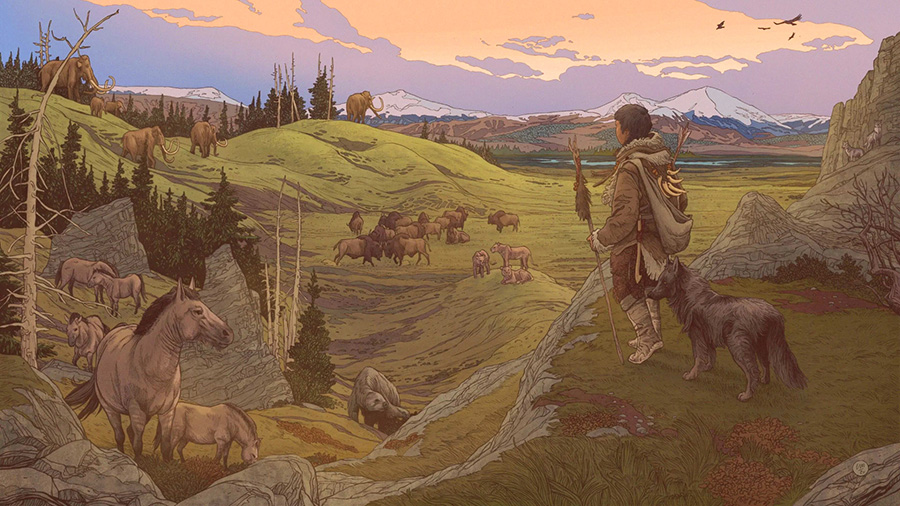First People to Settle in Americas were Accompanied by Their Dogs

A new study, published in the Proceedings of the National Academy of Sciences, suggests that dogs were domesticated in Siberia by 23,000 years ago, possibly while both people and wolves were isolated during the harsh climate of the most recent Ice Age; dogs then accompanied the first people into the Americas and traveled with them as humans rapidly dispersed into the continent beginning 15,000 years ago.
The Americas were one of the last regions in the world to be settled by people.
By this same time, dogs had been domesticated from gray wolf ancestors and were likely playing a variety of roles within human societies.
“When and where have long been questions in dog domestication research, but here we also explored the how and why, which have often been overlooked,” said lead author Dr. Angela Perri, a researcher in the Department of Archaeology at Durham University.
“Dog domestication occurring in Siberia answers many of the questions we’ve always had about the origins of the human-dog relationship.”
“By putting together the puzzle pieces of archaeology, genetics and time we see a much clearer picture where dogs are being domesticated in Siberia, then disperse from there into the Americas and around the world.”
“The only thing we knew for sure is that dog domestication did not take place in the Americas,” added co-author Dr. Laurent Frantz, a researcher in the Department of Veterinary Sciences at the Ludwig Maximilian University and the School of Biological and Chemical Sciences at Queen Mary University of London.
“From the genetic signatures of ancient dogs, we now know that they must have been present somewhere in Siberia before people migrated to the Americas.”
“The combined evidence from ancient humans and dogs is helping to refine our understanding of the deep history of dogs, and now points toward Siberia and Northeast Asia as a likely region where dog domestication was initiated,” said co-author Professor Greger Larson, a researcher in the Research Laboratory for Archaeology and History of Art at the University of Oxford.
During the most recent Ice Age, from 23,000-19,000 years ago, Beringia and most of Siberia were extremely cold, dry, and largely unglaciated.
The harsh climatic conditions leading up to, and during this period may have served to bring human and gray wolf populations into close proximity given their attraction to the same prey.
This increasing interaction, through mutual scavenging of kills from wolves drawn to human campsites, may have began a relationship between the species that eventually led to dog domestication, and a vital role in the populating of the Americas.
“We have long known that the first Americans must have possessed well-honed hunting skills, the geological know-how to find stone and other necessary materials and been ready for new challenges,” said co-author Dr. David Meltzer, an archaeologist in the Department of Anthropology at Southern Methodist University and the GLOBE Institute at the University of Copenhagen.
“The dogs that accompanied them as they entered this completely new world may have been as much a part of their cultural repertoire as the stone tools they carried.”
_____
Angela R. Perri et al. 2021. Dog domestication and the dual dispersal of people and dogs into the Americas. PNAS 118 (6): e2010083118; doi: 10.1073/pnas.2010083118
Source: www.sci-news.com/








